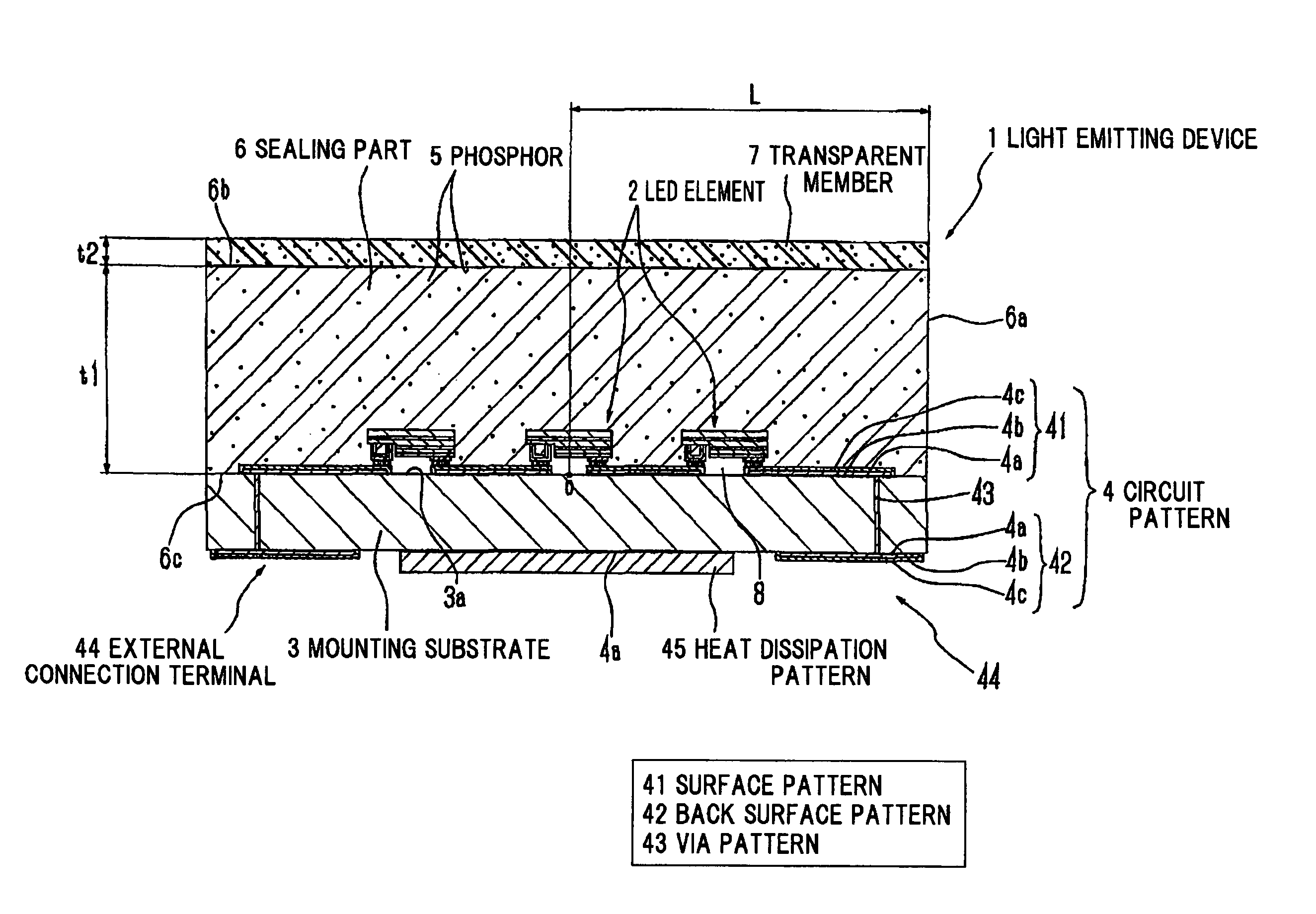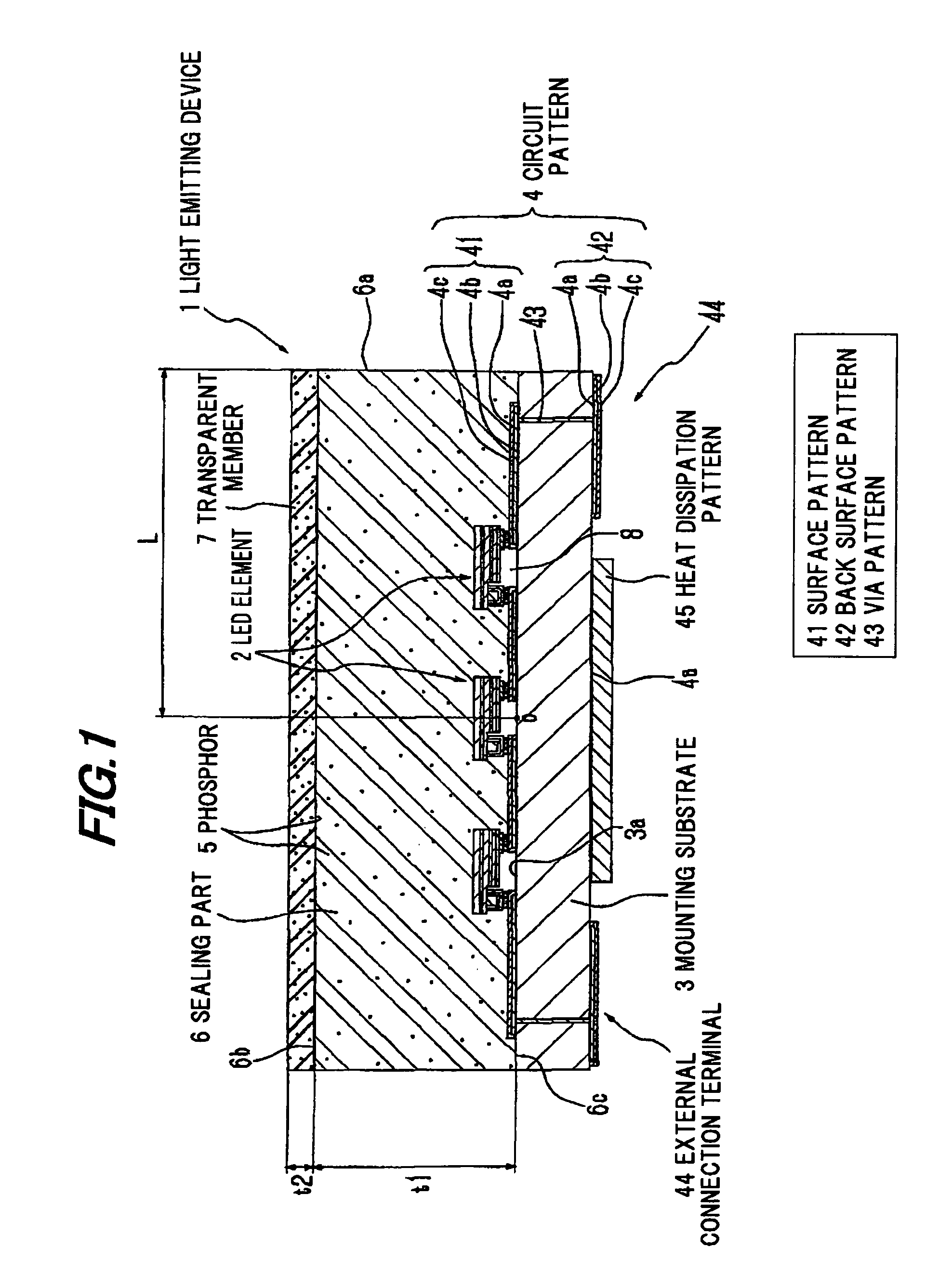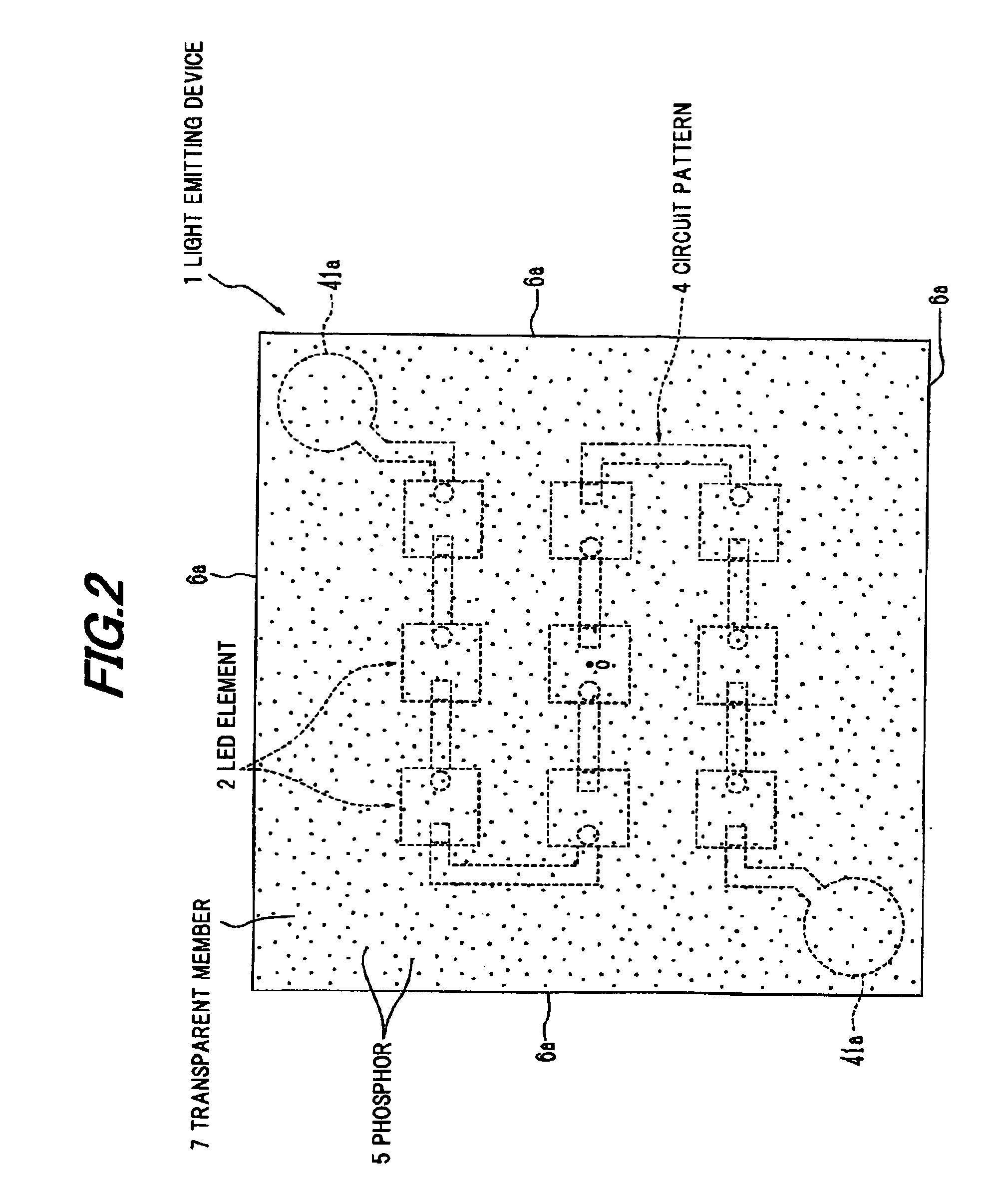Light emitting device and light emitter
a light emitting device and light emitting element technology, which is applied in the direction of discharge tube luminescnet screens, lighting and heating apparatus, instruments, etc., can solve the problems of uneven emission color, light extraction efficiency deterioration with time, and uneven resin material deterioration, so as to reduce sense unevenness. , the effect of reducing the difference in chromaticity
- Summary
- Abstract
- Description
- Claims
- Application Information
AI Technical Summary
Benefits of technology
Problems solved by technology
Method used
Image
Examples
first embodiment
[0067]FIGS. 1 to 3 each shows the first preferred embodiment of the invention, where FIG. 1 is a cross sectional view showing a light emitting device of the first preferred embodiment according to the invention.
[0068]As shown in FIG. 1, the light emitting device 1 comprises plural flip-chip type LED elements 2 formed of GaN-based semiconductor material, a mounting substrate 3 with a mounting surface 3a on which the LED elements 2 are mounted, a circuit pattern 4 formed on the mounting substrate 3 and formed of tungsten (W)-nickel (Ni)-gold (Au), a sealing part 6 for sealing the LED elements 2 on the mounting surface 3a of the mounting substrate 3 and formed of glass with phosphor 5 dispersed therein, and a transparent member 7 formed on the sealing part 6 and having the phosphor 5 dispersed therein. Between the LED elements 2 and the mounting substrate 3, a space 8 is formed into which no glass penetrates.
[0069]The LED elements 2 as a light emitting element are fabricated by epitaxi...
second embodiment
[0099]FIGS. 4 and 5 illustrate a second preferred embodiment according to the invention. FIG. 4 is a cross sectional view showing a light emitting device in the embodiment, and FIG. 5 is a top view showing the light emitting device in FIG. 4. Hereinafter, like components will be indicated by the same numerals as used above and explanations thereof will be omitted. The second embodiment is difference from the first embodiment in relation to the transparent member and the circuit pattern on the mounting substrate.
[0100]As shown in FIG. 4, the light emitting device 101 comprises the plural LED elements 2, the mounting substrate 3 for mounting the LED elements 2 thereon, the circuit pattern 104 formed on the mounting substrate 3 and formed of tungsten (W)-nickel (Ni)-silver (Ag), the sealing part 6 for sealing the LED elements 2 on the mounting surface 3a of the mounting substrate 3 and formed of glass with phosphor 5 dispersed therein, and a transparent member 107 formed on the sealing...
third embodiment
[0115]FIG. 7 is a cross sectional view showing a light emitting device in the third preferred embodiment according to the invention. Hereinafter, like components will be indicated by the same numerals as used above and explanations thereof will be omitted. The third embodiment is difference from the second embodiment in relation to the emission wavelength and number of LED elements, the kind of phosphor, and the dimensions of the mounting substrate, the sealing part and the transparent member.
[0116]As shown in FIG. 7, the light emitting device 301 comprises the plural LED elements 302, the mounting substrate 3 for mounting the LED elements 302 thereon, the circuit pattern 104 formed on the mounting substrate 3 and formed of tungsten (W)-nickel (Ni)-silver (Ag), the sealing part 6 for sealing the LED elements 302 on the mounting surface 3a of the mounting substrate 3 and formed of glass with phosphor 305 dispersed therein, and the transparent member 107 formed on the sealing part 6 a...
PUM
 Login to View More
Login to View More Abstract
Description
Claims
Application Information
 Login to View More
Login to View More - R&D
- Intellectual Property
- Life Sciences
- Materials
- Tech Scout
- Unparalleled Data Quality
- Higher Quality Content
- 60% Fewer Hallucinations
Browse by: Latest US Patents, China's latest patents, Technical Efficacy Thesaurus, Application Domain, Technology Topic, Popular Technical Reports.
© 2025 PatSnap. All rights reserved.Legal|Privacy policy|Modern Slavery Act Transparency Statement|Sitemap|About US| Contact US: help@patsnap.com



